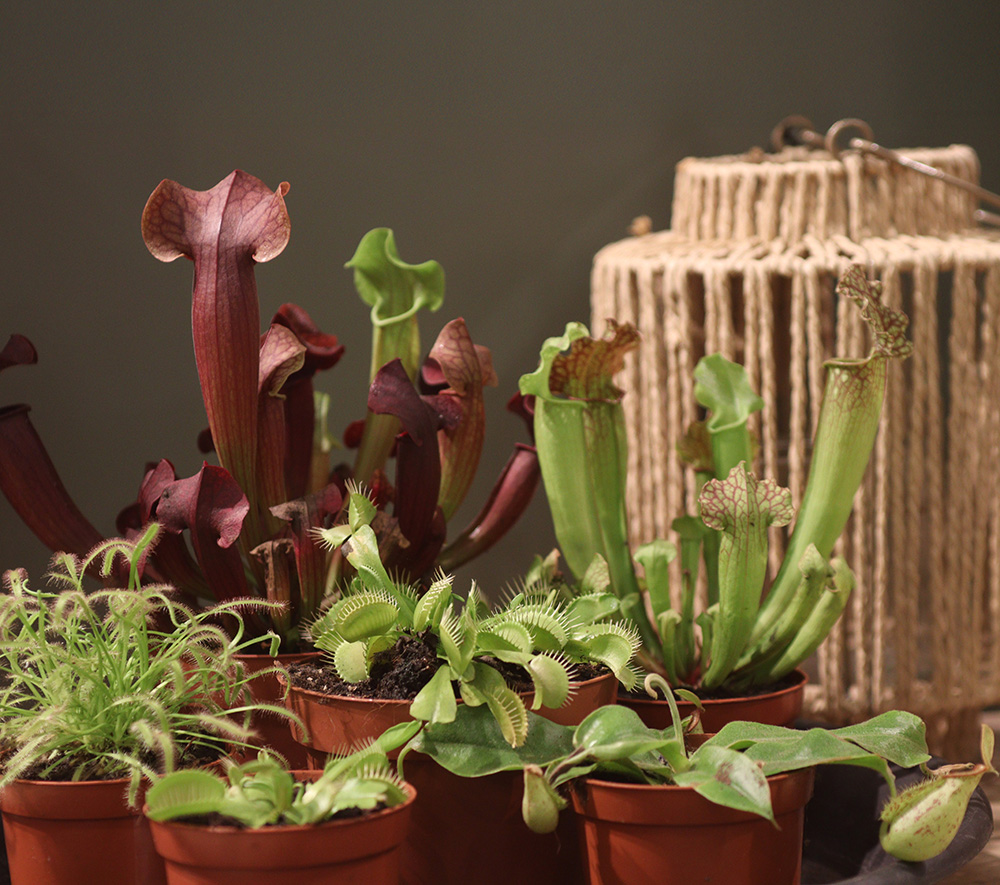
Having carnivorous plants at home is like owning a miniature ecosystem of intrigue. Not only do they add a touch of exotic beauty, but they also serve as natural pest control, catching pesky bugs without the need for chemicals.
Everything you need to know to care for your Carnivorous plants
Temperature
Most carnivorous plants will do fine in normal room temperatures. Keep in mind that carnivorous plants are generally tolerant of temperature, and it can be varied somewhat without harmful results. For best results, keep your plants within their optimum temperature range.
Light
Carnivorous plants, as a general rule, grow best in sunny conditions. Many do well in partial sun. The nutrient-poor and soggy bogs provide bad conditions for most plants. Those that do grow in the bog are usually stunted or short in height. As a consequence, the carnivorous plant habitat tends to be open and sunny. Full sun brings out the red pigmentation of most carnivorous plants. Many carnivorous plants grow quite well out-of-doors or indoors in a bright, sunny spot. Any windowsill, but north, will work fine.
Water
Keep the soil wet or at least damp all of the time. The easiest way to do this is use the tray method. Set the pots in a tray or saucer and keep water in it at all times. Pitcher plants can grow in soggy soil with the water level in the saucer as deep as 1/2 the pot, but most carnivorous plants prefer damp to wet soil, so keep the water at about 1/4 inch and refill as soon as it is nearly gone. Add water to the tray, rather than watering the plant. This will avoid washing away the sticky muscilage of the sundews and butterworts and keep from closing the flytraps with a false alarm. The only exception to this rule is the Nepenthes. These plants always like to be moist, but it is not necessary to stand them in water. Always use mineral-free water with your carnivorous plants, such as rainwater or distilled water, but avoid bottled drinking water. Reverse-osmosis water is also fine to use. Carnivorous plants grow in nutrient poor soils. The minerals from tap water can "over-fertilize" and "burn out" the plants.
Soil
It is important to use a specialist carnivorous compost as this family of plants need to be mineral and nutrient free.
Feed
Do not feed or fertilize your carnivorous plants. Grown under the conditions outlined above, your plants will be able to collect enough insects on their own to do well. Most carnivorous plants only need an insect or two a month in order to flourish.
Dormancy
Many carnivorous plants are native to temperate climates and require a dormancy period. This is a natural protective mechanism that allows plants to survive the harshness of winter. Some carnivorous plants, like the sundews, form winter buds. Others, like the Venus Flytrap and pitcher plants, form winter leaves. Some simply drop their leaves. Carnivorous plants will enter dormancy when winter conditions begin. If you do not allow them to rest, you will exhaust your plants and they will die. When your plants begin to show signs of dormancy, water them less. Leave the soil only slightly damp. Reduce the amount and the length of daylight. Keep them cool for 3 to 6 months, depending on its native area. This can be done by placing them in a frost-free porch or under staging in a greenhouse. Carnivorous plants do not require huge amounts of light during dormancy and darker areas will not harm them.



